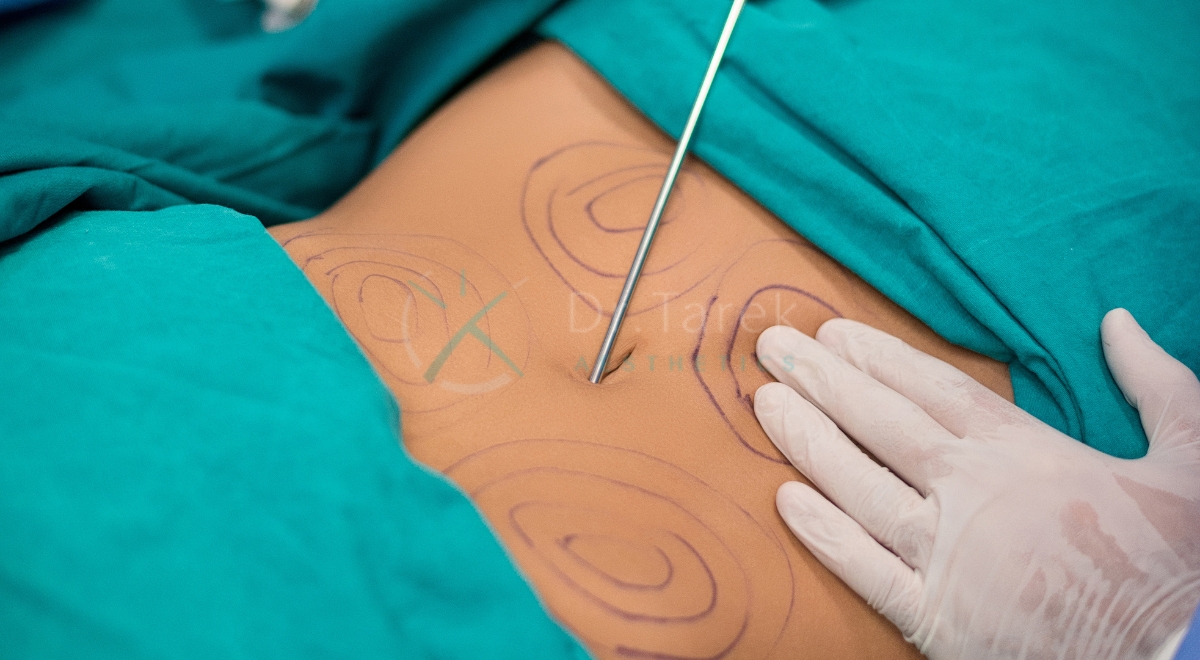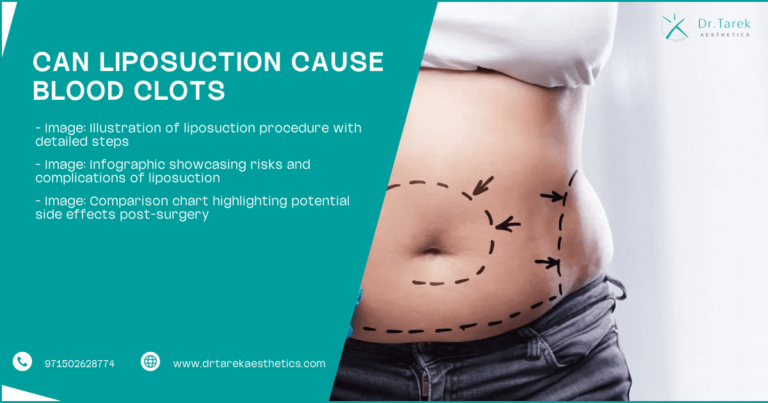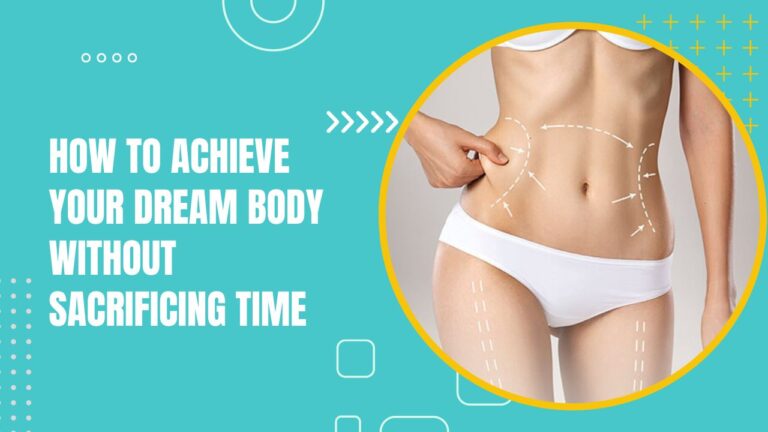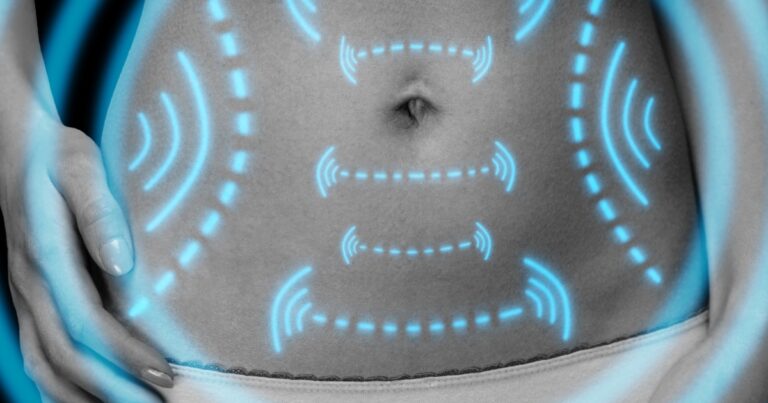When Liposuction Is Performed For Medical Reasons
Introduction
Liposuction is a surgical procedure often associated with cosmetic enhancements, but it also plays a crucial role in treating various medical conditions. This versatile technique involves removing excess fat deposits from specific areas of the body, not just for aesthetic purposes, but to alleviate symptoms and improve the quality of life for patients with certain health issues.
Slimming Treatment Dubai offers ways to help people lose weight and look thinner
many people visit dubai to try different methods for getting a slimmer body shape
Comprehensive Fat Removal helps get rid of extra fat from different parts of the body Comprehensive Fat Removal can make people look slimmer and feel more confident about their appearance
Understanding the medical reasons for liposuction is essential for both healthcare providers and patients. It sheds light on the procedure’s therapeutic potential beyond its well-known cosmetic applications. By exploring these medical indications, we can appreciate the broader scope of liposuction and its significance in addressing health concerns.
- Common misconceptions about liposuction:
- Only for cosmetic purposes
- Limited to weight loss
- Exclusive to certain body areas
- Benefits of medical liposuction:
- Symptom relief
- Improved mobility
- Enhanced quality of life
When Liposuction is Performed for Medical Reasons
Definition and Scope
Medical liposuction refers to the use of fat removal techniques to treat specific health conditions or alleviate symptoms caused by excess adipose tissue. Unlike cosmetic liposuction, which focuses on body contouring, medical liposuction aims to improve a patient’s health and well-being by addressing underlying medical issues.
Book A Consultation With Dr Tarek Bayazid
Top-rated Plastic Surgeon For Liposuction in Dubai
Installment Plan Available
The scope of medical liposuction extends to various conditions affecting different parts of the body. It can be used to treat localized fat accumulations that cause discomfort, pain, or functional impairment. In some cases, it may be combined with other treatments to achieve optimal results.
Common Medical Conditions Treated with Liposuction
Liposuction has proven effective in treating several medical conditions, offering relief to patients who may not respond well to conventional therapies. Some of the most common medical indications for liposuction include:
- Adipose tissue diseases
- Subcutaneous lipomas
- Chronic lymphedema
- Axillary hyperhidrosis
- Posttraumatic lipomas
- Postablative surgery and postirradiated skin issues
Each of these conditions presents unique challenges that liposuction can address, providing patients with improved functionality and comfort.
| Condition | Primary Benefit of Liposuction |
| Adipose tissue diseases | Reduction of painful fat deposits |
| Subcutaneous lipomas | Removal of benign fatty tumors |
| Chronic lymphedema | Alleviation of swelling and discomfort |
| Axillary hyperhidrosis | Reduction of excessive sweating |
| Posttraumatic lipomas | Correction of contour deformities |
| Postablative surgery | Improvement of skin texture and appearance |
Adipose Tissue Diseases
Multiple Systemic Lipomatosis
Multiple systemic lipomatosis is a rare condition characterized by the growth of numerous lipomas (benign fatty tumors) throughout the body. These growths can cause discomfort, pain, and cosmetic concerns for affected individuals.
Symptoms and Diagnosis
Patients with multiple systemic lipomatosis typically present with:
- Multiple, painless fatty lumps under the skin
- Symmetrical distribution of lipomas
- Gradual increase in size and number of lipomas over time
Diagnosis often involves a combination of physical examination, imaging studies (such as MRI or CT scans), and sometimes biopsy to confirm the nature of the growths.
How Liposuction Helps
Liposuction offers an effective treatment option for multiple systemic lipomatosis by:
- Removing large numbers of lipomas in a single procedure
- Reducing the overall volume of fatty tissue
- Improving body contour and alleviating discomfort
Dr. Tarek emphasizes that liposuction for this condition requires careful planning and expertise to ensure optimal results while minimizing risks.
Dercum’s Disease
Dercum’s disease, also known as adiposis dolorosa, is a chronic condition characterized by painful fatty deposits in various parts of the body. This rare disorder primarily affects women and can significantly impact quality of life.
Overview of the Condition
Key features of Dercum’s disease include:
- Multiple, painful lipomas
- Fatigue and weakness
- Depression and anxiety
- Cognitive difficulties
Diagnosis can be challenging due to the rarity of the condition and its similarity to other disorders. A thorough medical history, physical examination, and sometimes imaging studies are necessary for accurate diagnosis.
Benefits of Liposuction for Dercum’s Disease
Liposuction can provide significant relief for patients with Dercum’s disease by:
- Reducing the size and number of painful lipomas
- Alleviating pressure on surrounding tissues
- Improving mobility and functionality
While not a cure, liposuction can dramatically improve symptoms and quality of life for many patients with Dercum’s disease.
- Potential outcomes of liposuction for Dercum’s disease:
- Pain reduction
- Increased range of motion
- Improved self-esteem
- Better overall well-being
Subcutaneous Lipomas
What are Subcutaneous Lipomas?
Subcutaneous lipomas are benign tumors composed of fat cells that develop just beneath the skin. While usually harmless, these growths can become problematic if they grow large or develop in sensitive areas.
Characteristics of subcutaneous lipomas include:
- Soft, rubbery consistency
- Mobility under the skin
- Slow growth over time
- Typically painless, unless pressing on nerves
Liposuction as a Treatment Option
Liposuction offers an effective and minimally invasive approach to treating subcutaneous lipomas. This technique is particularly useful for:
- Large lipomas that are difficult to remove surgically
- Multiple lipomas scattered across the body
- Lipomas in cosmetically sensitive areas
Dr. Tarek notes that liposuction for lipomas often results in smaller incisions and faster recovery compared to traditional surgical excision.
| Aspect | Traditional Excision | Liposuction |
| Incision size | Larger | Smaller |
| Scarring | More noticeable | Minimal |
| Recovery time | Longer | Shorter |
| Effectiveness for multiple lipomas | Less efficient | Highly efficient |
Posttraumatic Lipomas
Causes and Symptoms
Posttraumatic lipomas are abnormal accumulations of fat that develop following an injury or trauma to soft tissue. These lipomas can form months or even years after the initial injury.
Common causes and symptoms include:
- Blunt force trauma
- Surgical procedures
- Soft tissue swelling that persists long after injury
- Localized pain or discomfort
- Visible or palpable lump at the site of previous injury
Role of Liposuction in Treatment
Liposuction plays a crucial role in treating posttraumatic lipomas by:
- Removing excess fat accumulation
- Restoring normal contour to the affected area
- Alleviating associated discomfort or functional limitations
This approach is particularly beneficial when the lipoma is large or located in an area that would make traditional surgical excision challenging.
- Benefits of liposuction for posttraumatic lipomas:
- Minimally invasive procedure
- Faster recovery compared to open surgery
- Improved aesthetic outcome
- Potential for combining with other reconstructive techniques
Chronic Lymphedema
Understanding Chronic Lymphedema
Chronic lymphedema is a condition characterized by persistent swelling, typically in the arms or legs, due to a compromised lymphatic system. This condition can significantly impact a person’s quality of life and may lead to complications if left untreated.
Key aspects of chronic lymphedema include:
- Progressive swelling of affected limbs
- Heaviness and discomfort in the swollen area
- Recurrent infections
- Skin changes and fibrosis over time
How Liposuction Can Alleviate Symptoms
While traditional treatments for lymphedema focus on compression and manual lymphatic drainage, liposuction has emerged as an effective surgical option for advanced cases. Here’s how liposuction can help:
- Removes excess fatty tissue that accumulates in lymphedematous limbs
- Reduces the overall volume of the affected limb
- Improves mobility and function
- Decreases the risk of infections
It’s important to note that liposuction for lymphedema is typically combined with ongoing conservative management for optimal long-term results.
| Stage of Lymphedema | Suitability for Liposuction |
| Stage 1 (Mild) | Not typically recommended |
| Stage 2 (Moderate) | May be considered if conservative treatments fail |
| Stage 3 (Severe) | Often beneficial, especially with fibrotic changes |
Axillary Hyperhidrosis
What is Axillary Hyperhidrosis?
Axillary hyperhidrosis refers to excessive sweating in the underarm area that goes beyond what’s necessary for normal thermoregulation. This condition can be socially embarrassing and may interfere with daily activities.
Characteristics of axillary hyperhidrosis include:
- Visible sweating that soaks through clothing
- Sweating that occurs regardless of temperature or physical activity
- Negative impact on social and professional life
- Potential skin irritation or infections due to constant moisture
Liposuction as a Treatment Method
Liposuction has emerged as an effective treatment for axillary hyperhidrosis, particularly when conservative measures have failed. The procedure, known as suction-curettage, targets the sweat glands in the underarm area.
Benefits of liposuction for axillary hyperhidrosis:
- Permanent reduction in sweating
- Minimal scarring compared to excisional techniques
- Quicker recovery time
- High patient satisfaction rates
Dr. Tarek emphasizes that proper patient selection and technique are crucial for achieving optimal results in treating axillary hyperhidrosis with liposuction.
- Considerations for liposuction in axillary hyperhidrosis:
- Severity of the condition
- Previous treatments attempted
- Patient’s overall health
- Expectations for results
Postablative Surgery and Postirradiated Skin
Issues Arising from Postablative Surgery
Postablative surgery, often performed for cancer treatment, can lead to contour irregularities and functional impairments. These issues may include:
- Volume deficits in treated areas
- Scar tissue formation
- Reduced mobility of affected body parts
- Aesthetic concerns impacting self-esteem
Benefits of Liposuction for Postirradiated Skin
Liposuction can play a valuable role in addressing complications of postablative surgery and postirradiated skin by:
- Improving contour irregularities
- Softening scar tissue
- Enhancing skin quality and texture
- Facilitating fat grafting procedures for volume restoration
In cases of postirradiated skin, liposuction can help remove fibrotic tissue and prepare the area for reconstructive procedures.
| Aspect | Before Liposuction | After Liposuction |
| Skin texture | Firm, fibrotic | Softer, more pliable |
| Contour | Irregular | Smoother |
| Functionality | Limited | Improved |
| Suitability for reconstruction | Challenging | Enhanced |
Debulking of Flaps
Explanation of Flap Debulking
Flap debulking refers to the process of reducing the volume of a surgical flap used in reconstructive procedures. Over time, these flaps may become bulky or poorly contoured, necessitating revision.
Common reasons for flap debulking include:
- Excessive volume causing functional impairment
- Aesthetic concerns
- Asymmetry with surrounding tissues
- Changes in body weight affecting flap appearance
How Liposuction is Used in This Context
Liposuction offers a minimally invasive approach to flap debulking, providing several advantages:
- Precise removal of excess fat within the flap
- Preservation of blood supply to the flap
- Minimal scarring compared to open techniques
- Ability to address large areas in a single procedure
The use of liposuction for flap debulking requires careful planning and execution to maintain the viability of the flap while achieving the desired contour.
- Key considerations in flap debulking with liposuction:
- Flap composition and blood supply
- Time since initial flap surgery
- Patient’s overall health and healing capacity
- Desired outcome and realistic expectations
Risks and Complications of Liposuction for Medical Reasons
Potential Risks
While liposuction for medical reasons can offer significant benefits, it’s important to be aware of potential risks. These may include:
- Infection
- Bleeding or hematoma formation
- Contour irregularities
- Skin necrosis (rare)
- Seroma (fluid accumulation)
- Temporary or permanent numbness
- Lymphatic injury (in cases of lymphedema treatment)
The likelihood of these complications varies depending on the specific condition being treated and the extent of the procedure.
How to Mitigate Complications
To minimize the risk of complications, several strategies can be employed:
- Thorough preoperative assessment and patient selection
- Use of appropriate surgical techniques
- Proper postoperative care and follow-up
- Patient education on self-care and warning signs
Dr. Tarek emphasizes the importance of choosing an experienced surgeon who specializes in medical liposuction to ensure the best possible outcomes.
| Complication | Prevention Strategy | Management Approach |
| Infection | Sterile technique, prophylactic antibiotics | Early detection, targeted antibiotics |
| Contour irregularities | Careful technique, even fat removal | Secondary touch-up procedures |
| Seroma | Compression garments, proper drainage | Aspiration, prolonged compression |
| Lymphatic injury | Specialized technique in lymphedema cases | Lymphatic therapy, compression |
How to Prepare for Medical Liposuction
Pre-procedure Steps
Proper preparation is crucial for the success of medical liposuction. Patients should follow these steps:
- Complete all required medical tests and evaluations
- Discontinue certain medications as advised by the surgeon
- Stop smoking at least two weeks before the procedure
- Arrange for transportation and post-operative care
- Prepare comfortable, loose-fitting clothing for recovery
It’s essential to follow all pre-operative instructions provided by your surgeon to ensure the best possible outcome.
What to Expect During the Consultation
During the consultation for medical liposuction, patients can expect:
- A thorough review of medical history and current condition
- Physical examination of the areas to be treated
- Discussion of treatment options and expected outcomes
- Explanation of the procedure, risks, and recovery process
- Opportunity to ask questions and address concerns
This consultation is a crucial time for patients to gain a clear understanding of the procedure and establish realistic expectations.
- Key topics to discuss during consultation:
- Specific goals of the procedure
- Potential limitations or challenges
- Recovery timeline and post-operative care
- Cost and insurance coverage (if applicable)
What to Expect During the Procedure
Overview of the Procedure
Medical liposuction is typically performed as an outpatient procedure under local anesthesia, sometimes with sedation. The general steps include:
- Marking of treatment areas
- Administration of anesthesia
- Insertion of small cannulas through tiny incisions
- Suction removal of excess fat
- Closure of incisions and application of dressings
The duration of the procedure varies depending on the extent of the area being treated and the specific condition being addressed.
Techniques Used in Medical Liposuction
Several techniques may be employed in medical liposuction, depending on the patient’s needs:
- Tumescent liposuction: Involves injecting a solution to minimize bleeding and facilitate fat removal
- Power-assisted liposuction: Uses a vibrating cannula for more efficient fat removal
- Ultrasound-assisted liposuction: Employs ultrasonic energy to liquefy fat before removal
- Laser-assisted liposuction: Utilizes laser energy to break down fat cells
The choice of technique depends on the specific medical condition, the area being treated, and the surgeon’s expertise.
| Technique | Best Suited For | Advantages |
| Tumescent | Most medical conditions | Reduced blood loss, even results |
| Power-assisted | Fibrous areas, large volumes | Less fatigue for surgeon, faster procedure |
| Ultrasound-assisted | Dense fat deposits | Enhanced fat removal, skin tightening |
| Laser-assisted | Small areas, skin laxity | Precision, potential skin tightening |
After the Procedure
Immediate Post
When Liposuction Is Performed For Medical Reasons
Introduction
Liposuction is a surgical procedure often associated with cosmetic enhancements, but it also plays a crucial role in treating various medical conditions. This versatile technique involves removing excess fat deposits from specific areas of the body, not just for aesthetic purposes, but to alleviate symptoms and improve quality of life for patients with certain health issues.
Understanding the medical reasons for liposuction is essential for both healthcare providers and patients. It sheds light on the procedure’s therapeutic potential beyond its well-known cosmetic applications. By exploring these medical indications, we can appreciate the broader scope of liposuction and its significance in addressing health concerns.
- Common misconceptions about liposuction:
- Only for cosmetic purposes
- Limited to weight loss
- Exclusive to certain body areas
- Benefits of medical liposuction:
- Symptom relief
- Improved mobility
- Enhanced quality of life
When Liposuction is Performed for Medical Reasons
Definition and Scope
Medical liposuction refers to the use of fat removal techniques to treat specific health conditions or alleviate symptoms caused by excess adipose tissue. Unlike cosmetic liposuction, which focuses on body contouring, medical liposuction aims to improve a patient’s health and well-being by addressing underlying medical issues.
The scope of medical liposuction extends to various conditions affecting different parts of the body. It can be used to treat localized fat accumulations that cause discomfort, pain, or functional impairment. In some cases, it may be combined with other treatments to achieve optimal results.
Common Medical Conditions Treated with Liposuction
Liposuction has proven effective in treating several medical conditions, offering relief to patients who may not respond well to conventional therapies. Some of the most common medical indications for liposuction include:
- Adipose tissue diseases
- Subcutaneous lipomas
- Chronic lymphedema
- Axillary hyperhidrosis
- Posttraumatic lipomas
- Postablative surgery and postirradiated skin issues
Each of these conditions presents unique challenges that liposuction can address, providing patients with improved functionality and comfort.
| Condition | Primary Benefit of Liposuction |
| Adipose tissue diseases | Reduction of painful fat deposits |
| Subcutaneous lipomas | Removal of benign fatty tumors |
| Chronic lymphedema | Alleviation of swelling and discomfort |
| Axillary hyperhidrosis | Reduction of excessive sweating |
| Posttraumatic lipomas | Correction of contour deformities |
| Postablative surgery | Improvement of skin texture and appearance |
Adipose Tissue Diseases
Multiple Systemic Lipomatosis
Multiple systemic lipomatosis is a rare condition characterized by the growth of numerous lipomas (benign fatty tumors) throughout the body. These growths can cause discomfort, pain, and cosmetic concerns for affected individuals.
Symptoms and Diagnosis
Patients with multiple systemic lipomatosis typically present with:
- Multiple, painless fatty lumps under the skin
- Symmetrical distribution of lipomas
- Gradual increase in size and number of lipomas over time
Diagnosis often involves a combination of physical examination, imaging studies (such as MRI or CT scans), and sometimes biopsy to confirm the nature of the growths.
How Liposuction Helps
Liposuction offers an effective treatment option for multiple systemic lipomatosis by:
- Removing large numbers of lipomas in a single procedure
- Reducing the overall volume of fatty tissue
- Improving body contour and alleviating discomfort
Dr. Tarek emphasizes that liposuction for this condition requires careful planning and expertise to ensure optimal results while minimizing risks.
Dercum’s Disease
Dercum’s disease, also known as adiposis dolorosa, is a chronic condition characterized by painful fatty deposits in various parts of the body. This rare disorder primarily affects women and can significantly impact quality of life.
Overview of the Condition
Key features of Dercum’s disease include:
- Multiple, painful lipomas
- Fatigue and weakness
- Depression and anxiety
- Cognitive difficulties
Diagnosis can be challenging due to the rarity of the condition and its similarity to other disorders. A thorough medical history, physical examination, and sometimes imaging studies are necessary for accurate diagnosis.
Benefits of Liposuction for Dercum’s Disease
Liposuction can provide significant relief for patients with Dercum’s disease by:
- Reducing the size and number of painful lipomas
- Alleviating pressure on surrounding tissues
- Improving mobility and overall comfort
While not a cure, liposuction can dramatically improve symptoms and quality of life for those suffering from this debilitating condition.
- Potential outcomes of liposuction for Dercum’s disease:
- Reduced pain levels
- Increased range of motion
- Improved emotional well-being
- Enhanced ability to perform daily activities
Subcutaneous Lipomas 
What are Subcutaneous Lipomas?
Subcutaneous lipomas are benign tumors composed of fat cells that develop just beneath the skin. While typically harmless, these growths can cause discomfort, affect appearance, and in some cases, interfere with movement or function.
Characteristics of subcutaneous lipomas include:
- Soft, rubbery consistency
- Mobility under the skin
- Slow growth over time
- Varying sizes, from small to several centimeters in diameter
Liposuction as a Treatment Option
Liposuction offers an effective and minimally invasive approach to treating subcutaneous lipomas. This technique is particularly useful for:
- Large lipomas that are difficult to remove through traditional excision
- Multiple lipomas scattered across the body
- Lipomas in sensitive or cosmetically important areas
Dr. Tarek notes that liposuction for lipomas often results in smaller incisions and faster recovery compared to surgical excision.
Benefits of using liposuction for subcutaneous lipomas:
- Minimal scarring
- Shorter recovery time
- Ability to treat multiple lipomas in one session
- Improved cosmetic outcomes
| Traditional Excision | Liposuction |
| Larger incisions | Smaller incisions |
| More visible scarring | Minimal scarring |
| Longer recovery | Faster recovery |
| Limited to fewer lipomas per session | Can treat multiple lipomas |
Posttraumatic Lipomas
Causes and Symptoms
Posttraumatic lipomas are abnormal accumulations of fat that develop following an injury or trauma to soft tissue. These growths can occur months or even years after the initial injury, often causing discomfort and cosmetic concerns.
Common causes of posttraumatic lipomas include:
- Blunt force trauma
- Surgical procedures
- Repetitive microtrauma
Symptoms associated with posttraumatic lipomas may include:
- A visible or palpable lump at the site of previous injury
- Discomfort or pain, especially when pressure is applied
- Restricted movement if the lipoma is near a joint
Role of Liposuction in Treatment
Liposuction plays a crucial role in treating posttraumatic lipomas by:
- Removing the excess fat accumulation
- Restoring normal contour to the affected area
- Alleviating associated discomfort or functional limitations
The procedure is particularly effective for larger or diffuse posttraumatic lipomas that may be challenging to remove through traditional excision techniques.
Benefits of liposuction for posttraumatic lipomas:
- Minimally invasive approach
- Ability to treat larger areas
- Improved cosmetic outcomes
- Reduced risk of recurrence compared to excision
Chronic Lymphedema 
Understanding Chronic Lymphedema
Chronic lymphedema is a condition characterized by persistent swelling in the arms or legs due to a compromised lymphatic system. This condition can result from various factors, including cancer treatments, infections, or congenital abnormalities.
Key aspects of chronic lymphedema:
- Progressive swelling of affected limbs
- Heaviness and discomfort in the limb
- Increased risk of infections
- Skin changes and fibrosis over time
How Liposuction Can Alleviate Symptoms
Liposuction has emerged as an effective treatment option for chronic lymphedema, particularly in cases where conservative measures have failed. The procedure, known as suction-assisted protein lipectomy (SAPL), aims to:
- Remove excess fat and fibrous tissue
- Reduce the overall volume of the affected limb
- Improve mobility and function
- Decrease the risk of infections
Dr. Tarek emphasizes that liposuction for lymphedema requires specialized techniques and should be performed by experienced surgeons familiar with the condition.
Benefits of liposuction for chronic lymphedema:
- Significant reduction in limb volume
- Improved quality of life
- Reduced need for compression garments
- Long-lasting results when combined with ongoing management
| Conservative Treatment | Liposuction for Lymphedema |
| Limited volume reduction | Substantial volume reduction |
| Ongoing daily management | Long-lasting results |
| Gradual improvement | Immediate improvement |
| Risk of progression | Halts progression in many cases |
Axillary Hyperhidrosis
What is Axillary Hyperhidrosis?
Axillary hyperhidrosis is a condition characterized by excessive sweating in the underarm area. This disorder can significantly impact a person’s quality of life, causing social embarrassment, skin irritation, and clothing stains.
Common features of axillary hyperhidrosis include:
- Excessive sweating beyond normal thermoregulatory needs
- Bilateral and relatively symmetric involvement
- Onset typically in adolescence or young adulthood
- Negative impact on daily activities and social interactions
Liposuction as a Treatment Method
Liposuction has emerged as an effective treatment for axillary hyperhidrosis, particularly for patients who have not responded well to conservative measures such as antiperspirants or botulinum toxin injections.
The procedure, known as suction curettage, involves:
- Removing sweat glands along with a small amount of subcutaneous fat
- Creating a more permanent solution compared to temporary treatments
- Minimal scarring due to small incisions
Benefits of liposuction for axillary hyperhidrosis:
- Long-lasting reduction in sweating
- Improved quality of life
- Minimal downtime
- High patient satisfaction rates
- Potential outcomes after liposuction for axillary hyperhidrosis:
- 60-90% reduction in sweating
- Decreased need for antiperspirants
- Improved confidence in social situations
- Reduced skin irritation and clothing damage
Postablative Surgery and Postirradiated Skin
Issues Arising from Postablative Surgery
Postablative surgery, often performed for cancer treatment, can lead to contour deformities and functional impairments. These issues may include:
- Volume deficits in treated areas
- Asymmetry between treated and untreated sides
- Scar contractures limiting movement
- Persistent pain or discomfort
Benefits of Liposuction for Postirradiated Skin
Liposuction can play a crucial role in addressing complications associated with postablative surgery and postirradiated skin. The procedure offers several benefits:
- Improving contour irregularities
- Softening scar tissue and fibrosis
- Enhancing skin quality and texture
- Facilitating fat grafting procedures for volume restoration
Dr. Tarek notes that liposuction in these cases requires careful planning and execution to avoid further complications in compromised tissues.
Advantages of using liposuction in postablative and postirradiated cases:
- Minimally invasive approach
- Ability to treat larger areas
- Improved aesthetic outcomes
- Potential for functional improvement
| Traditional Reconstruction | Liposuction-Assisted Reconstruction |
| More extensive surgery | Less invasive |
| Longer recovery time | Shorter recovery |
| Limited to specific areas | Can treat broader areas |
| May require multiple procedures | Often achieves results in fewer sessions |
Debulking of Flaps
Explanation of Flap Debulking
Flap debulking refers to the process of reducing the volume or bulk of a surgical flap used in reconstructive procedures. Over time, these flaps may become excessively bulky, leading to functional or aesthetic concerns.
Common reasons for flap debulking include:
- Excessive tissue volume affecting function
- Asymmetry compared to surrounding areas
- Patient dissatisfaction with appearance
- Interference with prosthetic fitting (in cases of limb reconstruction)
How Liposuction is Used in This Context
Liposuction has become an invaluable tool in flap debulking procedures, offering several advantages over traditional surgical techniques:
- Precise removal of excess fat without compromising blood supply
- Ability to contour large areas with minimal incisions
- Reduced risk of damaging vital structures within the flap
- Faster recovery compared to open debulking techniques
Benefits of using liposuction for flap debulking:
- Improved flap contour and symmetry
- Enhanced functional outcomes
- Minimal scarring
- Potential for outpatient or minimally invasive procedure
- Considerations when using liposuction for flap debulking:
- Timing of the procedure (usually several months post-reconstruction)
- Preservation of blood supply to the flap
- Careful assessment of flap composition (fat vs. muscle)
- Potential need for staged procedures in complex cases
Risks and Complications of Liposuction for Medical Reasons
Potential Risks
While liposuction for medical reasons can offer significant benefits, it’s important to be aware of potential risks and complications. These may include:
- Infection
- Bleeding or hematoma formation
- Contour irregularities
- Seroma (fluid accumulation)
- Numbness or changes in sensation
- Skin necrosis (rare)
- Lymphatic injury (particularly in lymphedema cases)
The likelihood and severity of these risks can vary depending on the specific condition being treated and the extent of the procedure.
How to Mitigate Complications
To minimize the risk of complications, several strategies can be employed:
- Proper patient selection and thorough preoperative evaluation
- Use of appropriate surgical techniques tailored to the specific condition
- Careful attention to sterile technique and infection prevention measures
- Adequate postoperative care and follow-up
Dr. Tarek emphasizes the importance of choosing an experienced surgeon familiar with medical liposuction procedures to ensure the best possible outcomes.
- Steps to reduce complication risks:
- Comprehensive preoperative assessment
- Optimization of any underlying medical conditions
- Use of compression garments postoperatively
- Early mobilization and adherence to postoperative instructions
- Regular follow-up appointments to monitor healing
How to Prepare for Medical Liposuction
Pre-procedure Steps
Preparing for medical liposuction involves several important steps to ensure the best possible outcome:
- Medical evaluation: A thorough assessment of your overall health and the specific condition being treated.
- Medication review: Discuss all current medications and supplements with your surgeon.
- Lifestyle adjustments: Follow guidelines on smoking cessation and alcohol consumption.
- Arrange support: Plan for transportation and assistance during the initial recovery period.
- Prepare your home: Set up a comfortable recovery area with necessary supplies.
What to Expect During the Consultation
The consultation is a crucial part of the preparation process. During this meeting, you can expect:
- A detailed discussion of your medical history and treatment goals
- Physical examination of the areas to be treated
- Explanation of the procedure, including risks and benefits
- Review of pre- and post-operative instructions
- Opportunity to ask questions and address any concerns
- Key points to discuss during consultation:
- Expected outcomes and limitations of the procedure
- Recovery timeline and post-operative care
- Potential alternatives to liposuction
- Cost and insurance coverage (if applicable)
What to Expect During the Procedure
Overview of the Procedure
Medical liposuction is typically performed as an outpatient procedure under local anesthesia with sedation or general anesthesia, depending on the extent of the treatment and the patient’s preferences.
The general steps of the procedure include:
- Administration of anesthesia
- Injection of tumescent solution to minimize bleeding and facilitate fat removal
- Creation of small incisions in the treatment area
- Insertion of a cannula to suction out excess fat and tissue
- Closure of incisions and application of dressings
Techniques Used in Medical Liposuction
Several specialized techniques may be employed in medical liposuction, depending on the specific condition being treate
FAQ’s
Can liposuction be performed for medical reasons?
Yes, while liposuction is commonly known as a cosmetic procedure, it can also be performed for medical reasons. These include treating conditions such as lipomas (benign fatty tumors), gynecomastia (excessive male breast tissue), and to improve the health of patients with conditions like lymphedema, which involves swelling due to lymph fluid accumulation.
What are the benefits of medical liposuction?
The benefits of medical liposuction include alleviating physical discomfort, improving mobility, and enhancing the quality of life for patients suffering from the aforementioned conditions. It can also have a positive psychological impact by improving body image and self-esteem..







